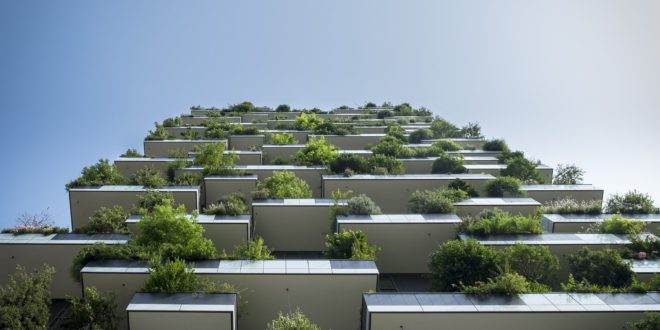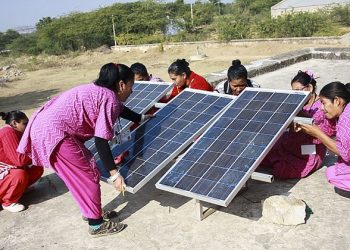Sustainability has become a focal point in residential and commercial buildings, and so have ways of integrating green innovations. Living walls are a unique statement piece for structures of all kinds. They have the power to greatly improve the air and peoples’ quality of life.
What Is a Living Wall?
A living wall is exactly what it sounds like — a wall that features vegetation and plant life. It can be on the inside or outside of a building and can span up each floor. It creates a visually pleasing installation.
It also makes for a more sustainable approach to building. Though sustainability and green building methods haven’t always been at the forefront of the field, the urgency of the climate crisis has made changes. Now, any form of quantifiable, green progress is a welcome addition for reducing emissions and protecting the environment.
These walls can function on small scales, inside private homes, or be the main focus in a hotel or restaurant. They’re versatile, which is why there is a new interest in using them as part of the building. However, the overall sustainability of living walls will ultimately depend on having the right integration.
How Sustainable Is It?
Sustainability depends on several factors. Installation is one — what materials go into integrating a living wall into a building? Next is maintenance. Homeowners or businesspeople will need to use resources like irrigation systems and fertilizers to keep the plants alive and healthy.
With the right setup, living walls are ideal for the environment and human health. Plants capture carbon dioxide, which is one of the main culprits of worsening the climate crisis. When nearby vehicles and buildings emit carbon dioxide, the living wall can play a role in capturing it before it goes into the atmosphere.
As the living wall then produces oxygen, it creates better, healthier and more breathable air for residents, visitors and workers. This process is sustainable and clean, which makes it ideal to integrate — especially in places like cities where green spaces may be less common.
Of course, the seasons, weather, location of the building and wall, and resources will influence how sustainable the greenery is. If the setting isn’t conducive to helping plants grow, the wall won’t survive. In these cases, renewable power and energy-saving technologies are better choices than a living wall.
Regardless, living walls are a step in the right direction — both aesthetically and sustainably.
How Can It Improve?
A properly sustainable building can be worth more money than typical dwellings. A living wall will certainly contribute to a value increase — but building owners or homeowners must implement them in the right way. Focus should be placed on the irrigation system, vegetation types and materials used.
Paneling is more efficient than trays that insert into the wall. It enables water to drip down rather than stay inside trays, which could lead to mold and bacteria. The irrigation system should be a tube-based drip that conserves and recycles water. Tanks are significantly less sustainable and wastewater.
The plant types, too, can influence sustainability. Ivy and succulents are ideal for indoor living walls since they either require less maintenance than most plants or can grow efficiently on their own. These tips for improving the sustainability of living walls can help them reach their true green building potential.
The Green Future
Improvements to living walls open the field up for more possibilities. Combining these walls with green roofs and renewable energy could be the next step toward full sustainability and a more eco-friendly future.



